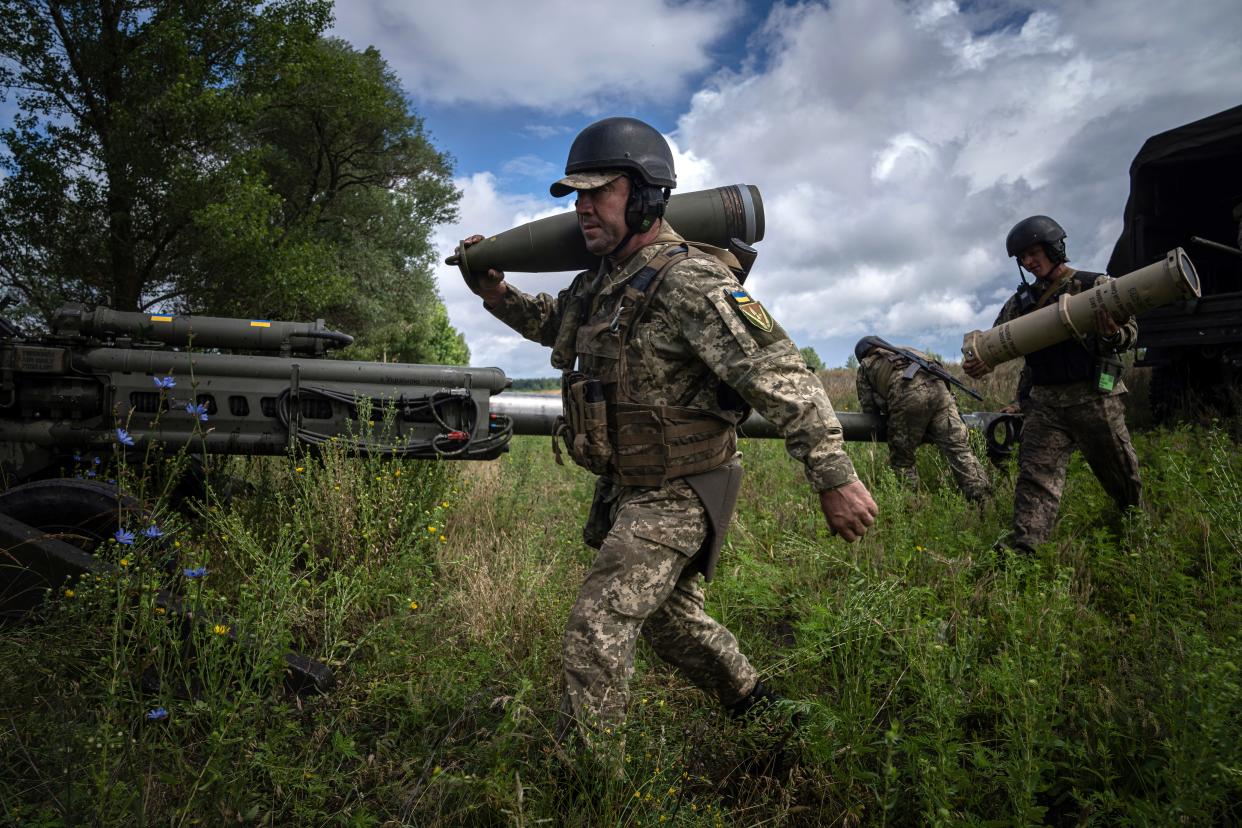Billions from the US is flowing to Ukraine. Here's where it comes from, and how it adds up

This story has been updated with new figures about European contributions to Ukraine.
The United States has sent billions of dollars' worth of aid to Ukraine in fight against a Russian invasion. Now, President Biden is seeking another $24 billion.
The source of that aid – from a combination of defense stockpiles and several parts of the federal budget – reveals the complex nature of America's foreign aid.
Some of the funding has been appropriated by Congress while other pieces have come from executive action. This week, Secretary of State Antony Blinken took an unannounced trip to Ukraine to announce more than $1 billion in aid.
Here’s how the funding has broken down so far:
How much is the U.S. supporting Ukraine?
The roughly $76 billion in support to Ukraine has broken into military, humanitarian and financial aid. The financial piece is supported by the Economic Support Fund, which is a large State Department fund aimed at foreign policy assistance. The two largest military buckets are the Presidential Drawdown Authority and the Ukraine Security Assistance Initiative.
PDA allows the Pentagon to transfer old military gear and ammunition, which might otherwise go unused, from depots and warehouses. The USAI modifies existing Defense Department contracts to send equipment to Ukraine.
The State Department has a detailed tally of the military gear shipped to Ukraine. Among the items:
300,000,000 rounds of small arms ammunition and grenades
One Patriot air defense battery and munitions
12 National Advanced Surface-to-Air Missile Systems (NASAMS) and munitions
198 155mm Howitzers and more than 2,000,000 155mm artillery rounds
31 Abrams tanks
186 Bradley Infantry Fighting Vehicles
500+ Mine Resistant Ambush Protected Vehicles (MRAPs)
In addition, Congress appropriated $4.65 billion in Foreign Military Financing, which allows Ukraine or allied partners grants or loans for military gear.
That leaves two buckets: Foreign Military Sales, those from the U.S. government; and direct commercial sales, U.S. companies selling to approved foreign governments. The U.S. sends about $600 million in each category.
How do direct commercial sales relate to Ukraine?
More than 14,000 entities in the United States are approved by the State Department to provide military-grade weapons and gear to foreign governments, including Ukraine.
USA TODAY had a behind-the-scenes look at one recent shipment of .50 caliber bullets that flowed from an ammunition manufacturing plant in Missouri to Poland and eventually Ukraine.
The State Department approved $608 million in private sales to Ukraine last year. That's far less than private sales to some other countries: The top approved recipient of private sales was Singapore at nearly $6 billion including aircraft parts and components.
How does the U.S. contribution compare to other countries to Ukraine?
According to new data from the Kiel Institute for the World Economy released Sept. 7, Europe has now overtaken the United States in total commitments to Ukraine, with commitments of about $167 billion dollars by all main European contributors.
Calculated by percentage of GDP, some smaller nations stand out, according to the Kiel Institute for the World Economy. Estonia has contributed 1.46% of its entire GDP to Ukraine or roughly $420 million.
How does aid compare to other U.S. budget items?
The $76 billion is an enormous figure—but hard to put in context. The Council of Foreign Relations, a non-partisan think tank, recently compared the amount to other high profile spending initiatives. It’s much less than the $2.2 trillion spent on Coronavirus aid, or the hundreds of billions authorized for the Troubled Asset Relief Program to shore up the U.S. banking system after the Great Recession in 2008.
Nick Penzenstadler is a reporter on the USA TODAY investigations team. Contact him at npenz@usatoday.com or @npenzenstadler, or on Signal at (720) 507-5273.
This article originally appeared on USA TODAY: How much money has the U.S. given to Ukraine? The numbers, explained

